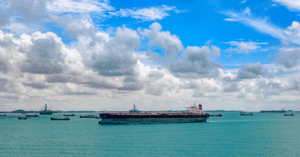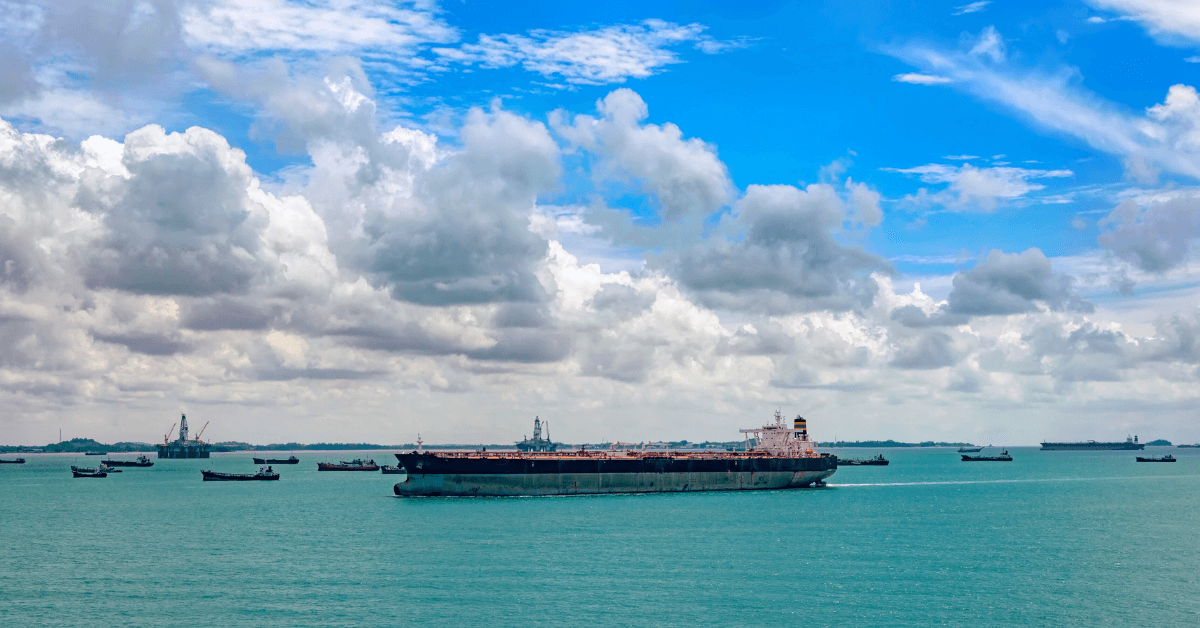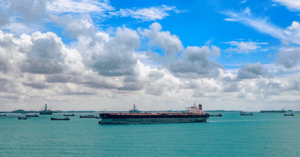
NYK Enhances Fire Safety Measures After Rise In Car Carrier Fire Incidents Globally
June 24, 2025
Turkey’s Largest Floating Dock Begins Operations With First Vessel
June 24, 2025

Two supertankers suddenly turned around near the Strait of Hormuz recently, as tensions between the U.S. and Iran increased, making oil shipping in the area more risky.
Per tracking data, both very large crude carriers (VLCCs), Coswisdom Lake and South Loyalty, changed their course at the entrance of the strait following U.S. military strikes on Iran.
The Coswisdom Lake approached the Strait of Hormuz on Sunday but then turned south instead of continuing. A day later, it reversed again and resumed sailing toward the port of Zirku in the United Arab Emirates.
Meanwhile, the South Loyalty performed a similar U-turn and remained just outside the strait on Monday. As per tracking data and shipping records, it was originally scheduled to pick up crude oil from Iraq’s Basra terminal.
Both ships are capable of carrying about 2 million barrels of crude oil. Coswisdom Lake is managed by China’s COSCO Shipping Energy, and South Loyalty is operated by South Korea’s Sinokor Merchant Marine.
Data from Kpler and LSEG indicate that the vessel was chartered by Unipec, the trading division of China’s state-owned company Sinopec, to transport crude oil to China.
These unusual ship movements show that oil shipping companies are being more cautious. After the U.S. got involved in Israel’s attacks on Iran, fears have grown that Iran could respond by closing the Strait of Hormuz-a narrow but important route between Iran and Oman that handles nearly 20% of the world’s oil and gas trade.
Iran’s Press TV reported that the country’s parliament approved a bill to shut the strait, though it still needs final approval from Iran’s Supreme National Security Council. While Iran has made similar threats in the past, it has never actually closed the passage.
Shipping activity through the strait has shifted. Singapore’s Sentosa Shipbrokers reported that the number of empty tankers entering the Gulf has fallen by 32%, while departures of loaded tankers have dropped by 27% compared to early May.
Several other tankers have also taken precautions. The chemical tanker Kohzan Maru changed its route and stayed in the Gulf of Oman instead of heading toward the strait. The oil tanker Red Ruby and chemical ship Marie C both paused and dropped anchor near the UAE port of Fujairah, instead of moving through the strait. All three were due to load cargo.
A spokesperson from Taiwan’s Formosa Petrochemical Corporation said that oil companies are now planning to send vessels into the area only when their loading time is near, to reduce time spent in the strait.
Two of Japan’s top shipping companies, Mitsui O.S.K. Lines and Nippon Yusen, confirmed that their ships continue to pass through Hormuz but have been instructed to keep their time in the region as short as possible.
This cautious behaviour is also impacting oil markets. Oil prices spiked to five-month highs on Monday, with both Brent and West Texas Intermediate (WTI) crude rising due to fears of supply disruptions. Some market analysts now predict that oil could hit $100 a barrel if the situation worsens.
At the same time, the cost of chartering a supertanker has more than doubled within a week. Shipping data shows that daily rates have now surpassed $60,000.
Vessel tracking platforms like MarineTraffic also show ships changing their routes. More ships are now sailing closer to the coast of Oman, while Iranian-flagged vessels are staying within Iran’s waters to stay safer.
Some oil traders and experts warn that there could be delays, as more ships choose to wait offshore instead of sailing through risky areas. A partner at international law firm Clyde & Co. told Reuters that the shipping industry needs to prepare for delays and look at alternative routes, learning from past disruptions like those in the Red Sea.
References: Reuters, Bloomberg
Source: Maritime Shipping News


